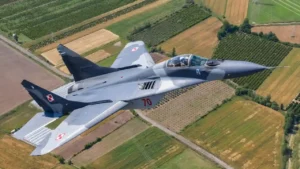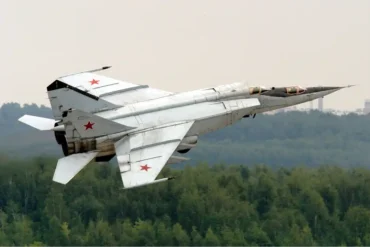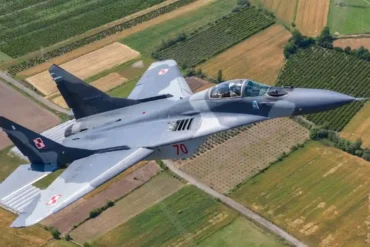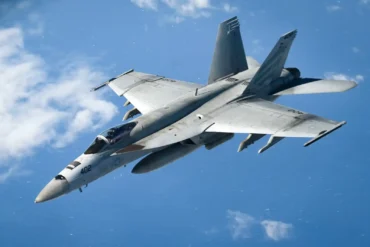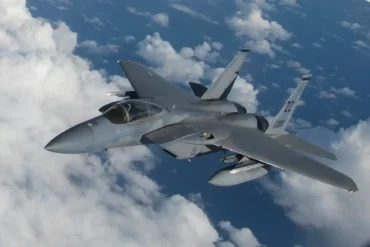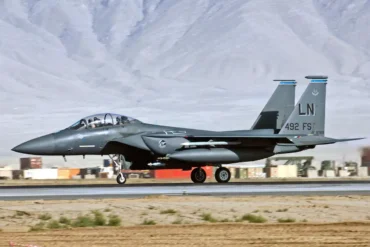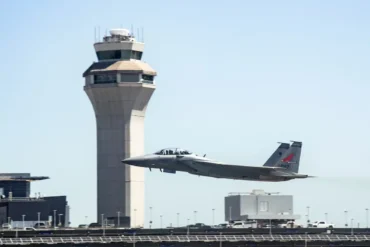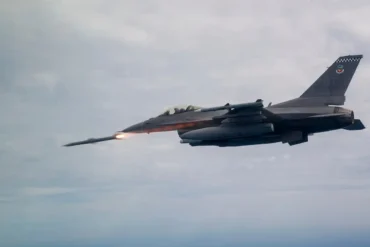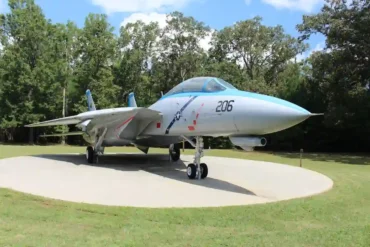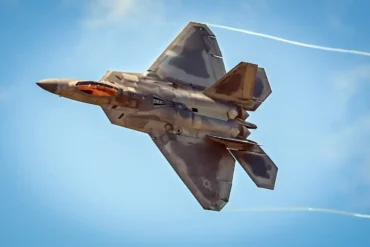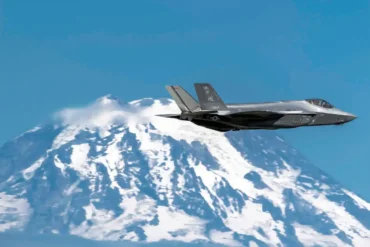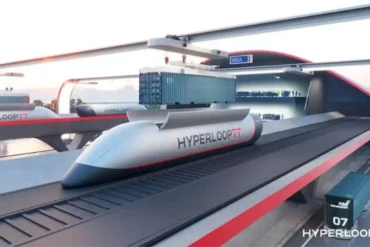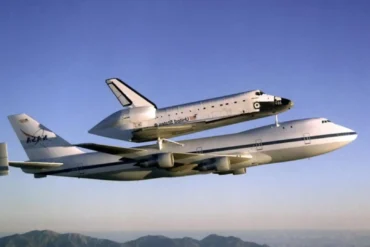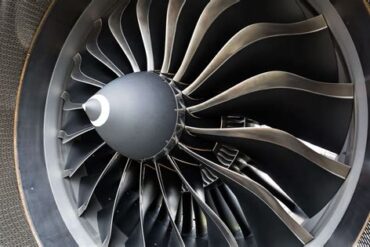The MiG-29, a fourth-generation multi-role fighter aircraft, has proven its prowess in both air superiority and ground-attack missions since its introduction in the late 1970s. As one of the most iconic fighters in the world, the MiG-29 has served in various air forces and been a cornerstone of many countries’ defense strategies. Understanding the MiG-29 top speed is essential for grasping the aircraft’s overall performance. This article will delve into the details of its top speed in various units (Mach, km/h, and mph), provide an in-depth analysis of its capabilities, and examine the factors contributing to the MiG-29’s incredible speed.
MiG-29 Top Speed in Different Units
Before we dive into the technicalities of the MiG-29’s top speed, let’s first highlight the key figures.
- Mach 2.3 (the aircraft can exceed Mach 2.3 at high altitudes).
- 2,450 km/h (1,520 mph or 1,320 knots) at high altitude.
These figures reflect the MiG-29’s ability to reach impressive speeds while operating at altitudes that optimize its engine performance. Now, let’s explore what contributes to this extraordinary speed and how the MiG-29 compares to other high-performance fighter jets in terms of velocity.
The MiG-29: General Overview and Design
The MiG-29 was developed by the Soviet Union in the 1970s to counter the advanced Western fighters of the time, such as the McDonnell Douglas F-15 Eagle and General Dynamics F-16 Fighting Falcon. It was designed as a versatile, multi-role fighter capable of conducting a wide range of missions, including air-to-air combat, air-to-ground attacks, and reconnaissance.
The aircraft’s two Klimov RD-33 afterburning turbofan engines provide the necessary thrust for the MiG-29 to reach supersonic speeds. These engines are capable of producing 81.58 kN (18,340 lbf) of thrust each with afterburner, which significantly enhances the aircraft’s acceleration and speed at higher altitudes.
Key Performance Features of the MiG-29
The MiG-29’s top speed is just one of its many impressive features. Below are other key performance metrics that contribute to its status as one of the top fighter jets in the world.
1. Speed and Acceleration
As mentioned earlier, the MiG-29 can achieve Mach 2.3+ at high altitudes, which translates to 2,450 km/h or 1,520 mph. This capability places the MiG-29 among the fastest fighter aircraft in the world. Its superior thrust-to-weight ratio of 1.09 ensures that the MiG-29 can accelerate quickly, allowing it to reach these speeds in minimal time. This is especially advantageous in combat scenarios where speed is essential for both offense and evasion.
2. Rate of Climb
One of the MiG-29’s most remarkable performance features is its rate of climb, which is 330 m/s (65,000 ft/min). This allows the MiG-29 to rapidly ascend to high altitudes, making it an excellent platform for intercepting enemy aircraft in a variety of combat situations.
3. Service Ceiling
The MiG-29’s service ceiling is a staggering 18,000 meters (59,000 feet). This allows the aircraft to operate in the upper atmosphere, where the air density is lower, and the engines perform more efficiently, contributing to its top speed.
4. Combat Range
While the MiG-29’s primary role is air superiority, it can also perform ground-attack missions with a combat range of 700–900 km (430–560 miles, 380–490 nautical miles) when equipped with air-to-air and air-to-ground missiles. This range can vary depending on mission configuration and fuel load.
Factors Affecting the MiG-29’s Speed
Several factors influence the MiG-29’s ability to reach its top speed of 2,450 km/h or Mach 2.3. These include the altitude, atmospheric conditions, and the aircraft’s design, particularly its wing shape, engine configuration, and fuel capacity.
1. Altitude and Air Density
The MiG-29’s top speed is typically achieved at high altitudes, where the aircraft can maximize the efficiency of its engines. The thinner atmosphere at higher altitudes reduces air resistance, allowing the engines to push the aircraft to greater speeds. However, the speed can vary significantly at lower altitudes due to increased drag, especially at transonic and subsonic speeds.
2. Thrust-to-Weight Ratio
The MiG-29’s thrust-to-weight ratio of 1.09 ensures that the fighter has sufficient power to propel itself to extraordinary speeds. The engine’s afterburner function also plays a crucial role by significantly increasing the engine’s output at full throttle.
3. Aerodynamic Design
The aircraft’s design is optimized for high-speed performance. Its swept-back wings, delta wings, and sharp nose contribute to reduced drag and better airflow around the aircraft, allowing for superior speed and maneuverability. These features enable the MiG-29 to maintain high speeds even during aggressive maneuvers.
MiG-29: A Comparison with Other High-Performance Fighters
When comparing the MiG-29 to other fighters of its generation, it stands out as one of the fastest jets in the world. Let’s take a closer look at how its top speed compares to other renowned aircraft.
MiG-29 vs. F-16 Fighting Falcon
The F-16 Fighting Falcon, developed by the United States, is another iconic fourth-generation multi-role fighter. While it is highly maneuverable and versatile, the F-16’s top speed is slightly lower than that of the MiG-29. The F-16 can reach speeds of 2,050 km/h (1,270 mph), making the MiG-29’s top speed around 20% faster.
MiG-29 vs. F-15 Eagle
The F-15 Eagle, a top-tier fighter jet developed by McDonnell Douglas (now Boeing), also competes with the MiG-29 in terms of speed. The F-15 has a top speed of around 2,660 km/h (1,650 mph), which is higher than the MiG-29. However, the MiG-29’s maneuverability and acceleration give it an edge in many air combat scenarios.
MiG-29 vs. Su-27 Flanker
The Su-27 Flanker, developed by the Soviet Union as a counterpart to the MiG-29, is also known for its impressive speed. The Su-27 has a top speed of 2,500 km/h (1,550 mph), making it comparable to the MiG-29, though the latter still holds a slight advantage in terms of maneuverability and agility.
Why Speed Matters in Modern Air Combat
Speed is an essential factor in modern air combat, but it’s not the only determinant of a fighter’s effectiveness. The ability to quickly intercept or evade enemy aircraft, combined with the capability to carry out precision strikes, makes speed a critical asset for modern air forces.
In scenarios such as dogfighting, the MiG-29’s high-speed capabilities allow it to engage enemy aircraft, make quick changes in positioning, and evade incoming missiles. This speed, coupled with its superior maneuverability, makes the MiG-29 a formidable adversary in close-quarters combat.
Conclusion
The MiG-29 is undeniably one of the fastest and most capable fighter aircraft in the world. With a top speed of Mach 2.3, or 2,450 km/h (1,520 mph), it has proven itself as an elite platform for both air superiority and ground-attack missions. Its exceptional speed is complemented by a range of other performance features, including its rate of climb, service ceiling, and thrust-to-weight ratio, which ensure that the MiG-29 remains a dominant force in air combat. Whether engaging in dogfights or long-range intercept missions, the MiG-29’s speed and agility remain essential components of its success.
